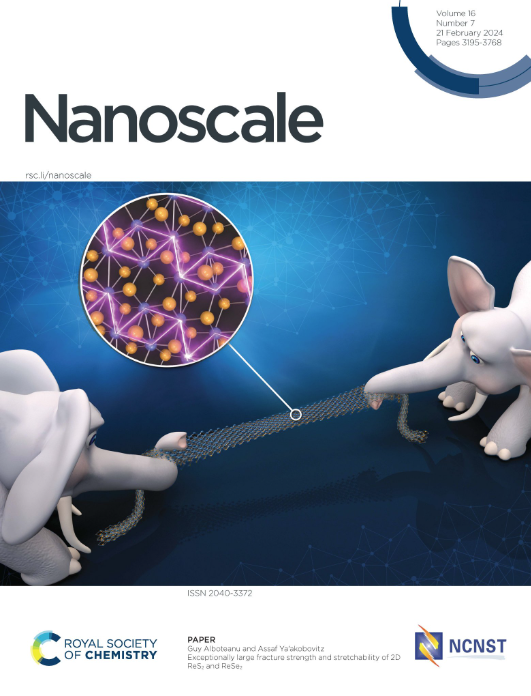2D Carbon’s Dual Pioneers: Graphene Oxide and Graphdiyne Guiding Solar Evaporation through Three-Dimensional Mastery
IF 5.1
3区 材料科学
Q1 CHEMISTRY, MULTIDISCIPLINARY
引用次数: 0
Abstract
Carbon-based two-dimensional (2D) materials, graphene oxide (GO) and graphdiyne (GDY), emerge as dual pioneers in Solar-powered water purification technology by mastering three-dimensional (3D) optimization: broadband photon harvesting, localized thermal management, and controllable water transport. This review dissects how their unique hybridization modes—GO’s sp²/sp³ heterostructure and GDY’s sp/sp²-conjugated lattice—synergize to govern these tripartite mechanisms. First, orbital engineering in GO extends π-π* transitions for a high solar absorption, while GDY’s Dirac-cone bandgap enables ultrafast hot-carrier generation. Second, thermal confinement is achieved through GO’s anisotropic heat dissipation and GDY’s proton-relay networks, minimizing parasitic losses. Third, the electrostatic force elimination effect of GO, coupled with GDY’s nanometer-scale channel regulation, enables efficient ion separation and screening. Critically, we demonstrate how these three dimensions—light, heat, and mass—are interlocked: GO’s hydrophilicity accelerates evaporation kinetics, while GDY’s structural flexibility tailors water pathways. Challenges such as GO’s oxidation instability and GDY’s scalable synthesis are addressed, with future directions advocating machine learning-driven hybridization control and modular evaporator designs. This work redefines “3D mastery” as a paradigm integrating spectral, thermal, and fluidic optimization, offering a roadmap for next-generation solar water-energy systems.二维碳的双重先驱:氧化石墨烯和石墨炔通过三维掌握引导太阳能蒸发
碳基二维(2D)材料,氧化石墨烯(GO)和石墨炔(GDY),通过掌握三维(3D)优化:宽带光子收集,局部热管理和可控的水输送,成为太阳能水净化技术的双重先驱。本文分析了氧化石墨烯的sp²/sp³异质结构和GDY的sp/sp²-共轭晶格是如何协同作用来控制这些三方机制的。首先,GO中的轨道工程扩展了π-π*跃迁,实现了高太阳能吸收,而GDY的狄拉克-锥带隙使超快热载流子生成成为可能。其次,通过氧化石墨烯的各向异性散热和GDY的质子中继网络实现热约束,最大限度地减少寄生损失。其三,氧化石墨烯的静电力消除效应,加上GDY纳米尺度的通道调节,使得离子的高效分离和筛选成为可能。关键是,我们展示了这三个维度——光、热和质量是如何相互关联的:氧化石墨烯的亲水性加速了蒸发动力学,而GDY的结构灵活性则调整了水的路径。解决了氧化石墨烯的氧化不稳定性和GDY的可扩展合成等挑战,未来的方向是提倡机器学习驱动的杂交控制和模块化蒸发器设计。这项工作将“3D掌握”重新定义为整合光谱,热和流体优化的范例,为下一代太阳能水电系统提供了路线图。
本文章由计算机程序翻译,如有差异,请以英文原文为准。
求助全文
约1分钟内获得全文
求助全文
来源期刊

Nanoscale
CHEMISTRY, MULTIDISCIPLINARY-NANOSCIENCE & NANOTECHNOLOGY
CiteScore
12.10
自引率
3.00%
发文量
1628
审稿时长
1.6 months
期刊介绍:
Nanoscale is a high-impact international journal, publishing high-quality research across nanoscience and nanotechnology. Nanoscale publishes a full mix of research articles on experimental and theoretical work, including reviews, communications, and full papers.Highly interdisciplinary, this journal appeals to scientists, researchers and professionals interested in nanoscience and nanotechnology, quantum materials and quantum technology, including the areas of physics, chemistry, biology, medicine, materials, energy/environment, information technology, detection science, healthcare and drug discovery, and electronics.
 求助内容:
求助内容: 应助结果提醒方式:
应助结果提醒方式:


